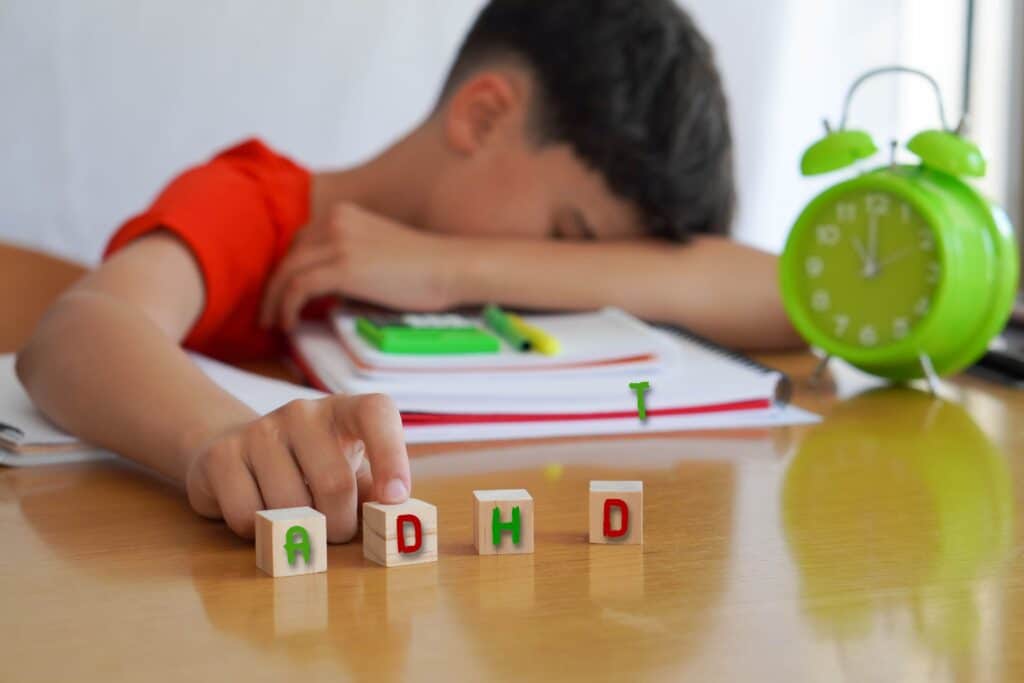As K-12 educators, we are constantly seeking new ways to support every learner in our classroom. We’ve all had those students—the ones whose minds seem to be moving a million miles a minute, whose boundless energy overflows their desks, and whose potential feels just out of reach.
For years, the traditional approach often focused on managing behavior, but a deeper understanding of Attention-Deficit/Hyperactivity Disorder (ADHD) has shown us that true support comes from understanding the why behind the behaviors.
Think back to a recent lesson. You’ve given clear, verbal instructions, and most of the class has started the task. But one student is still staring at the clock, tapping their pen, or doodling in the corner of their notebook. It’s not a lack of effort; it’s a difference in how their brain is wired.
This is where a neuro-informed approach to teaching students with ADHD becomes not just a best practice, but a necessity. By shifting our perspective from “managing” to “empowering,” we can create a classroom environment where students with ADHD don’t just survive—they thrive.
We know that success is about having the right tools. Here are research-backed strategies and practical tools to effectively teach students with ADHD, transforming the classroom experience for both you and your students.
Understanding the “Why”: The Neuroscience of ADHD and Executive Function
To truly support our students, we must first recognize that ADHD is a neurodevelopmental difference, not a behavioral choice. Research shows that ADHD is linked to weaker function and structure of the prefrontal cortex, which governs a set of skills known as executive functions. These are the “CEO skills” of the brain, including:
- Inhibition: The ability to control impulses and resist distractions.
- Working Memory: The capacity to hold and manipulate information in the mind to complete a task.
- Emotional Regulation: The skill of managing and responding to emotions in a controlled way.
- Planning and Organization: The process of breaking down complex tasks into manageable steps.
- Self-Motivation: The ability to initiate tasks, especially those that are not inherently interesting.
When a student struggles with these skills, it’s not due to a lack of will, but rather a neurological challenge. Our strategies must be designed to build, support, and compensate for these executive function deficits.
Core Classroom Strategies for Students with ADHD
Creating a structured and predictable environment is the most powerful tool in your arsenal. The following strategies provide the external framework that students with ADHD need to succeed.
- Structure and Predictability: Post a daily visual schedule on the board so students know what to expect. Use clear cues, like a bell or chime, to signal transitions between activities. Predictable routines reduce anxiety and help students mentally prepare for what’s next.
- Clear, Concise Instructions: Avoid multi-step verbal commands. Instead, give one or two instructions at a time. Pair verbal instructions with visual aids, such as written steps on the board or a printed checklist. For complex assignments, break them down into smaller, manageable chunks with specific due dates for each segment.
- Strategic Seating: Seat the student near you, away from distractions like windows, doors, or high-traffic areas. Consider seating them next to a positive role model. Offering flexible seating options, such as a wobble chair or a standing desk, can also provide a healthy outlet for their energy, as movement can help increase the production of dopamine, a neurotransmitter linked to focus.
- Incorporate Movement Breaks: Instead of fighting a student’s need to move, embrace it. Short, structured “brain breaks” like a quick lap around the classroom, a few jumping jacks, or a brief stretching session can help students re-regulate and refocus. Consider having the student run small errands, like delivering a note to the office, to provide a productive energy outlet.
- Positive Reinforcement and Frequent Feedback: Students with ADHD often respond more effectively to immediate, positive feedback. Acknowledge their effort and success in the moment. A simple “great job on getting started on that assignment!” can be more powerful than delayed praise. Use a point or token system for small, attainable goals to maintain motivation.
Essential Tools and Technology
Assistive technology and low-tech tools are game-changers for students with ADHD. These tools provide external support for internal executive function challenges.
- For Writing & Organization:
- Task Management Apps: Tools like Todoist or the Notes app can help students create digital to-do lists and break down large assignments.
- Mind Mapping Software: Apps like MindNode help visual thinkers organize their ideas and see the connections between different concepts before writing.
- Portable Word Processors: For students who struggle with handwriting, these devices offer a distraction-free way to take notes and complete assignments.
- For Reading & Comprehension:
- Text-to-Speech Software: Programs like Speechify or the built-in text-to-speech features on devices read digital text aloud, helping students process information audibly while reducing visual fatigue.
- Audiobooks: Services like Audible and Learning Ally allow students to listen to assigned texts, which can improve comprehension and retention.
- For Time Management & Focus:
- Timers: A visual timer helps students understand the passage of time. Programmed alarms or vibrating watches can also serve as discreet reminders to stay on task.
- Noise-Cancelling Headphones: These can create a personal, controlled acoustic environment, minimizing distractions and helping students stay focused during independent work.
Practical Accommodations and Modifications
Small changes can make a world of difference. Consider implementing these academic accommodations to level the playing field.
- Assignments & Homework:
- Reduce the number of items on worksheets.
- Allow extra time to complete assignments and tests.
- Accept non-written forms of reports, such as oral presentations or projects.
- Use graphic paper for math problems to help with number alignment.
- Testing:
- Offer the option of taking tests in a quiet, distraction-free area.
- Provide frequent, short quizzes instead of one long exam.
- Allow the student to dictate answers for essay questions.
- Daily Support:
- Allow students to have an extra set of books at home to avoid forgetting them.
- Encourage the use of a homework assignment book and supervise the student as they write down assignments.
The Power of Partnership
Finally, remember that you are not alone in this effort. Open and frequent communication with parents is critical. They are your best resource for understanding a student’s challenges and celebrating their successes outside of school.
Furthermore, don’t hesitate to collaborate with specialists, such as school psychologists or special education coordinators, to develop a comprehensive plan that meets the student’s unique needs.
By equipping ourselves with these strategies and tools, we can move beyond simply managing a diagnosis and begin the true work of education: empowering every student to reach their full potential.
The journey won’t always be easy, but by creating an adaptable, supportive, and understanding environment, we can help our students with ADHD build the skills they need to navigate the world and succeed on their own terms.
You’ve got important career goals — we have the graduate program to get you there. Check out our available graduate degree programs to advance your career today!




